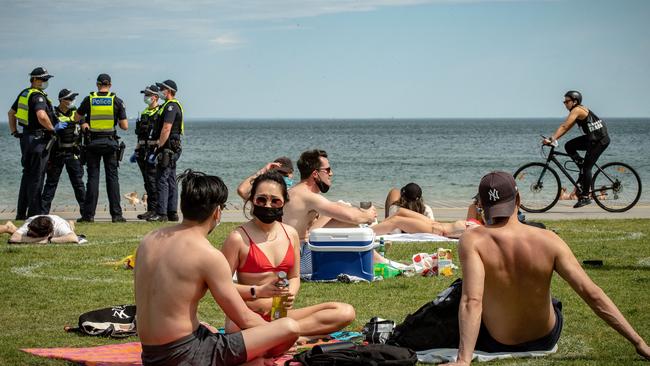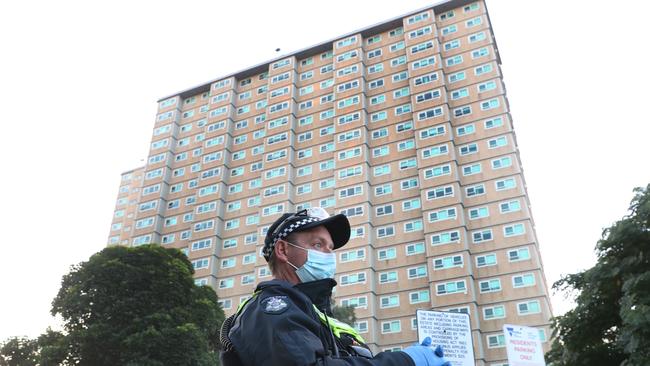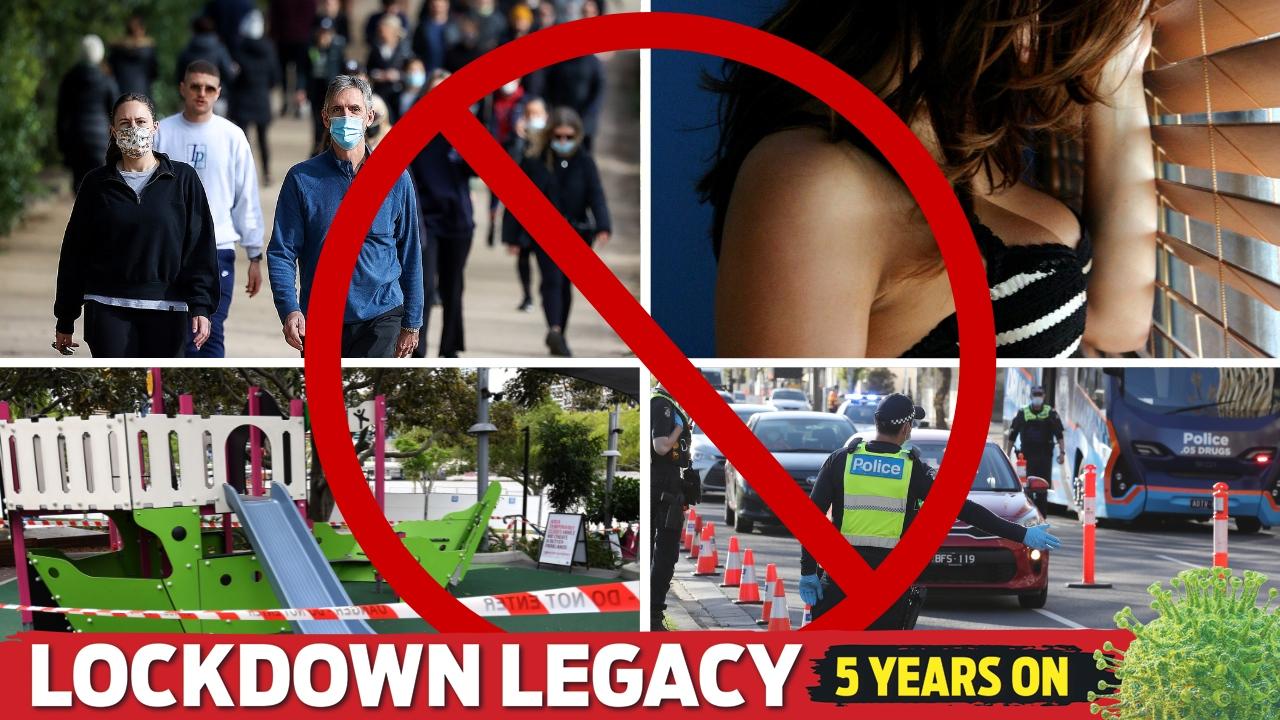How far we’ve come in defeating Victoria’s second coronavirus wave
After hundreds of deaths, thousands of cases, months in isolation and 171 days under the tide of a second wave — Melbourne has officially eliminated coronavirus.

Coronavirus
Don't miss out on the headlines from Coronavirus. Followed categories will be added to My News.
171 days.
That’s how long Victorians have worked hard to eliminate coronavirus.
June 9 was the last day the state recorded zero cases before the second wave.
Little did we know the next time we’d see this number would be in 139 days time, on October 26.
In between those dates Victoria was in bad shape.
A total of 819 people died — with 59 deaths alone recorded on September 4.
All up Victoria has seen the most COVID-19 cases in Australia — 20,345 — since the start of the pandemic.

There were outbreaks in hotel quarantine, schools, aged care facilities and workplaces.
Early in the second wave, 36 suburbs Melbourne suburbs were locked down for one month.
Next the ‘Ring of Steel’ or a soft border separated regional Victoria from metro Melbourne.
Victorians were forbidden to travel interstate, or had to seek an exemption.
Some lucky Melburnians escaped to enjoy life in sunnier states, while the rest of us toughed it out during a dark winter.
Face masks were made compulsory, you weren’t allowed 5km from home and a curfew existed.
Friday marks 28 days without any new coronavirus cases in Victoria. It’s a milestone for epidemiologists, as by definition this means we’ve eliminated the virus from the community.
Here’s a look back at Victoria’s long and hard road to elimination.
START OF SECOND WAVE
June 9 was the last day the state recorded zero daily cases before the second wave.
At the time Victorias were enjoying their new-found freedoms, with restaurants and cafes and retail reopening after the first lockdown.
Things started to escalate on June 17, when daily cases jumped from eight to 21 in one week. Easing of restrictions still went ahead on June 22.
A Stamford Plaza hotel contractor tested positive to COVID-19 on June 18.
Earlier that week chief health officer Brett Sutton said he was ‘nervous’ about a sudden rise in cases — and rightly so.

By July 4, Victoria had reached 108 new cases — the first time since March 28 we’d clocked more than 100 new cases in one day.
The Stamford Plaza cluster also grew to 42.
On this day more than 310,000 people across 36 suburbs in Melbourne’s north and west were thrust back into stage three restrictions.
Suburbs including Keilor Downs, Broadmeadows and West Footscray were deemed ‘hot zones’ and residents were told they could only leave home for four reasons until July 29.
Then police began guarding 14 housing commission towers in Flemington and 13 in North Melbourne, after an outbreak emerged.
On July 6, Premier Dan Andrews told the media “we are going to see some big days, big numbers in the days ahead”.

CLUSTERS
The state’s largest coronavirus cluster was at the Flemington and North Melbourne public housing towers, with a total of 311 cases.
Aged care facilities Baptcare Wyndham Lodge in Werribee, St Basils in Fawkner and Epping Gardens in Epping were the next worst, recording 261, 223 and 220 cases respectively.
Bertocchi Smallgoods in Thomastown was the largest industrial outbreak (211 cases) and Al-Taqwa College in Truganina had the largest school cluster (210).
In May Cedar Meats, one of the first major industry outbreaks, had 111 cases.


DARK DAYS
Deaths were increasing in Victoria. The highest day was September 4, with 59 recorded on that day alone.
On July 19 it was made mandatory for Melburnians to wear face masks when outside of the home. Regional Victoria followed on July 30.
Metro Melbourne entered stage 4 lockdown on Sunday August 2 from 6pm — initially for six weeks — and regional Victoria moved to stage 3 restrictions on Wednesday 6 August.
Melbourne’s curfew came into effect from 8pm to 5am and you were only allowed to travel within 5km of your home.
On September 13, the lockdown was extended for another two weeks with some changes to the curfew (eased from 8pm to 9pm) and exercise (two hours per day, instead of one).
As things looked hopeful for restrictions easing on September 23, the Chadstone Butcher’s Club cluster took off and highlighted flaws in the state’s contact tracing systems.
The cluster produced 39 cases, and a further six at Oddfellows Cafe in Kilmore and three in Shepparton.

WHEN THINGS STARTED TO TURN
In early August the number of mystery cases began to fall.
On August 5 there were 3969 — the highest number of coronavirus cases with an unknown source in Victoria.
By mid-August this had dropped to 1622 cases.
At the end of the month there were only 108 mystery cases.
Some relief came on September 13 and more on September 27 when Melbourne’s eight-week curfew ended.
On October 26, the 5km radius was extended to 25km — and in a momentous feat, Victoria recorded its first day of zero new cases since June 9.
One week later Victoria saw significant restrictions ease.
The 25km radius was dropped, as was the Ring of Steel which reconnected metro Melbourne to regional Victoria. Two visitors were also allowed at the home.
From November 22, face masks were not required outdoors if you could socially distance.
And now, as of Monday, interstate travel recommenced between Victoria and New South Wales. Things will only get better for families when Queensland’s border opens on December 1.
Earlier this week, Doherty Institute Director Professor Sharon Lewin said if we record zero cases on Friday, the virus would have effectively been eliminated from the community.
What sobering news after a very tough year for all.




